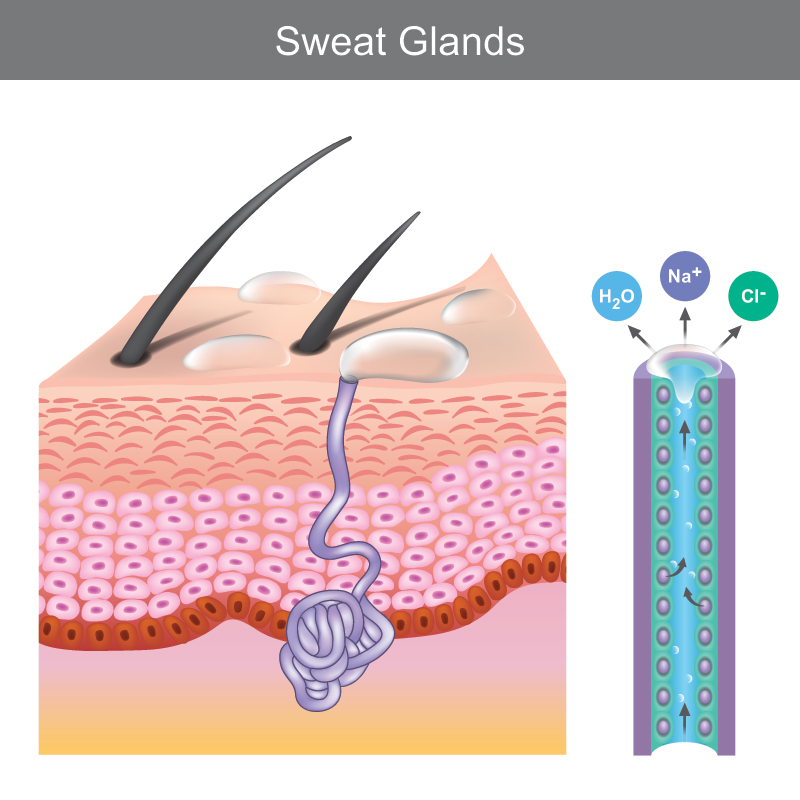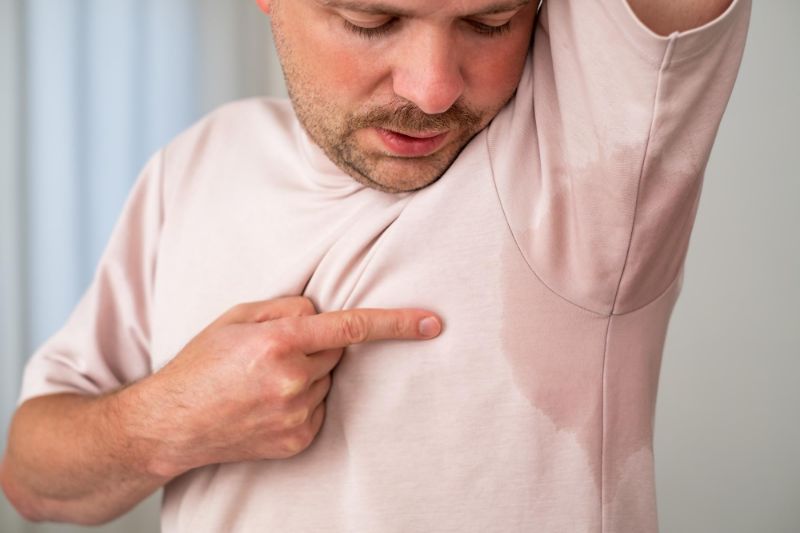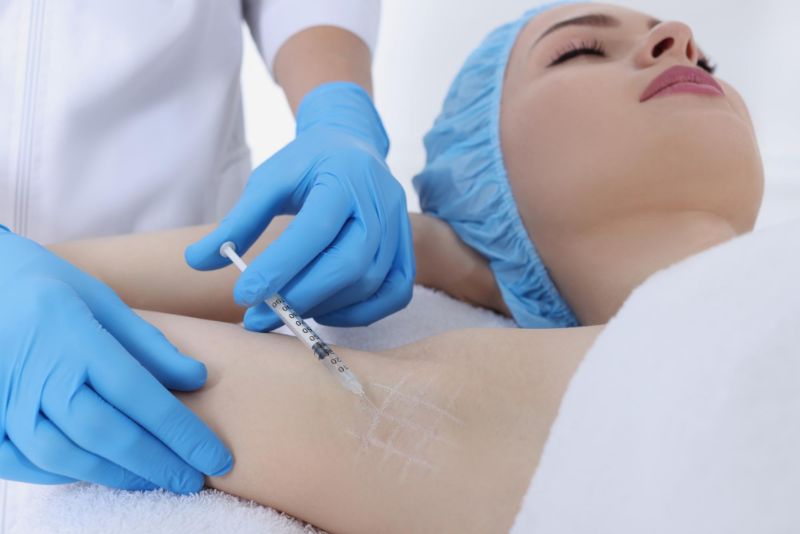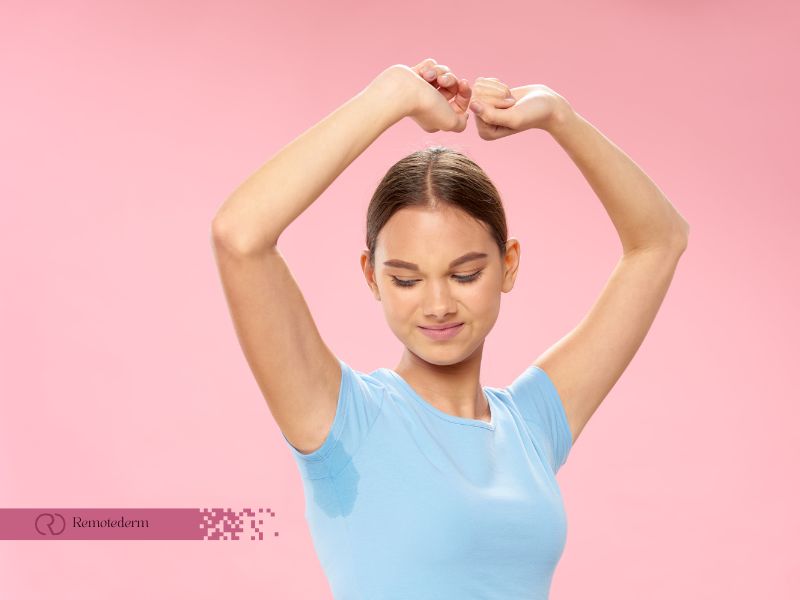Are you tired of dealing with excessive sweating that goes beyond what’s necessary to regulate body temperature? If so, you may be suffering from hyperhidrosis symptoms, a common medical disorder that affects individuals in various ways. From embarrassing sweat marks on clothing to social discomfort and functional limitations, hyperhidrosis can significantly impact your quality of life. But fear not, as this comprehensive guide will delve into the symptoms, causes, and treatment options available for managing hyperhidrosis. Whether you’re seeking answers or looking for effective solutions, continue reading to gain a deeper understanding of this condition and discover ways to regain control.
What is Hyperhidrosis?
Hyperhidrosis is a common medical disorder defined by excessive perspiration that exceeds the amount required to maintain body temperature. Individuals suffering from hyperhidrosis sweat excessively in certain parts of the body or all over. Hyperhidrosis is classified into two types:
- Primary hyperhidrosis: This type of hyperhidrosis is not caused by an underlying medical condition and tends to be localized in specific areas of the body. It often starts during childhood or adolescence and may have a genetic component.
- Secondary hyperhidrosis: Secondary hyperhidrosis is caused by an underlying medical condition or external factors such as medications or hormonal changes. It can affect larger areas of the body and may develop later in life.

This condition can cause visible sweating that often leaves marks on clothing and leads to social discomfort and embarrassment. Prolonged exposure to moisture can result in skin maceration and the development of fungal infections. Hyperhidrosis can also lead to an unpleasant body odor due to the interaction between sweat and bacteria on the skin. Although the exact cause of hyperhidrosis is unknown, it is believed to be related to overactive sweat glands or overstimulation of the sympathetic nervous system. Despite the challenges it presents, there are various treatment options available to manage the symptoms and improve the quality of life for individuals with hyperhidrosis.
symptoms of hyperhidrosisUnderstanding Hyperhidrosis Symptoms
Hyperhidrosis manifests through excessive sweating, which can occur in specific areas of the body or all over. Common areas affected by hyperhidrosis include the underarms, palms of the hands, soles of the feet, and the face. Understanding the symptoms associated with hyperhidrosis can help individuals identify and manage the condition effectively. Here are some warning signs:
- Excessive sweating: The primary symptom of hyperhidrosis is the presence of excessive sweating, which can occur in specific areas of the body or affect the entire body.
- Focal sweating: Hyperhidrosis often leads to sweating in specific focal areas such as the palms, underarms, feet, or face.
- Generalized sweating: In some cases, hyperhidrosis can cause excessive sweating all over the body, rather than being limited to specific areas.
- Visible signs: Excessive sweating can result in visible signs such as wet patches on clothing or sweat dripping from the affected areas.
- Skin maceration: Prolonged exposure to moisture due to excessive sweating can cause skin maceration, which refers to the softening and breakdown of the skin.
- Body odor: The combination of sweat and bacteria on the skin can lead to an unpleasant body odor.
- Social discomfort: Hyperhidrosis can cause social discomfort and embarrassment due to the visible signs of sweating and body odor.
- Clothing and footwear issues: Excessive sweating can necessitate frequent clothing changes and pose challenges in finding suitable footwear.
- Functional limitations: Severe cases of hyperhidrosis may interfere with daily activities, such as gripping objects, writing, or using electronic devices, due to excessively sweaty hands.

By recognizing these symptoms, individuals can better understand hyperhidrosis and seek appropriate medical guidance for diagnosis and potential treatment options.
causes of hyperhidrosisUnderstanding Hyperhidrosis Causes
The exact cause of hyperhidrosis is still unknown. However, there are a number of factors that could influence its development. Here are some key points to understand about hyperhidrosis causes:
- Genetic predisposition: Hyperhidrosis can run in families, suggesting a genetic component to the condition. A family history of hyperhidrosis increases the likelihood that an individual would also experience the illness.
- Overactive sweat glands: Hyperhidrosis is often linked to overactive sweat glands that produce more sweat than necessary. The reason behind this overactivity is not yet clear.
- Neurological factors: Certain neurological conditions, such as Parkinson’s disease or multiple sclerosis, can be associated with hyperhidrosis. These conditions may disrupt the normal functioning of the nervous system, leading to excessive sweating.
- Hormonal imbalances: Hormonal changes, particularly during menopause or puberty, can contribute to the development of hyperhidrosis. Fluctuations in hormone levels may affect the body’s sweat production.
- Emotional triggers: Emotional stress, anxiety, or excitement can trigger episodes of excessive sweating in individuals with hyperhidrosis. The exact mechanism behind this connection is still under investigation.
- Medical conditions: Hyperhidrosis can be secondary to other medical conditions such as hyperthyroidism, diabetes, or infections. Treating the underlying condition may help alleviate the symptoms of hyperhidrosis.
- Medications: Certain medications, such as antidepressants, antipyretics, or hormone therapies, can cause excessive sweating as a side effect. This type of sweating is known as drug-induced hyperhidrosis.
Understanding the possible causes of hyperhidrosis can provide insights into the underlying mechanisms of the condition. Further research is needed to unravel the precise factors contributing to hyperhidrosis and develop more targeted treatment approaches.
Treatment Options for Hyperhidrosis
While there is no cure for hyperhidrosis, several treatment options can help manage the symptoms effectively. The choice of treatment depends on the severity of the condition and its impact on the individual’s quality of life. Here are some common treatment options:
- Antiperspirants: Over-the-counter or prescription-strength antiperspirants containing aluminum chloride can be applied to the affected areas to reduce sweating.
- Medications: In some cases, doctors may prescribe medications such as anticholinergics to help reduce sweating. These medications work by blocking the chemical signals that stimulate sweat production.
- Botox injections: Botulinum toxin injections can temporarily block the nerves responsible for activating the sweat glands, effectively reducing sweating in the treated areas.
- Iontophoresis: This non-invasive procedure involves the use of a medical device that delivers a mild electrical current to the affected areas, effectively decreasing sweat production.
- Surgery: In severe cases, surgical options such as sweat gland removal or sympathectomy (cutting or clamping the nerves that stimulate sweating) may be considered. Individuals who have not responded to alternative therapies are often the only ones who have access to these possibilities.

When dealing with hyperhidrosis, consulting with a healthcare professional is crucial to identify the most suitable treatment option for each individual’s case. The severity of symptoms, the affected areas, and the person’s overall health plays a significant role in determining the appropriate course of action. Fortunately, there are several treatment options available to address hyperhidrosis, and one innovative solution is Remotederm’s online dermatology consultation services.
Remotederm offers convenient and accessible online consultations with dermatologists, allowing individuals across Canada to seek professional advice without the need for in-person visits. This service eliminates the long waits typically associated with dermatologist appointments, providing a more efficient and streamlined experience for hyperhidrosis patients. By accessing Remotederm’s services from anywhere in Canada, individuals can receive prompt guidance on their condition and explore treatment options promptly.
Hyperhidrosis Symptoms Conclusion
In summary, hyperhidrosis is a prevalent medical condition distinguished by an abnormal amount of perspiration that goes beyond the body’s temperature regulation needs. It can have a significant impact on individuals’ daily lives, causing social discomfort and functional limitations. Understanding the symptoms, such as excessive sweating, focal sweating, visible signs, and body odor, can help individuals identify and manage the condition effectively.
While the exact cause of hyperhidrosis is still unknown, factors like genetic predisposition, overactive sweat glands, neurological factors, hormonal imbalances, emotional triggers, medical conditions, and medications may contribute to its development. Treatment options for hyperhidrosis include antiperspirants, medications, Botox injections, iontophoresis, and surgery in severe cases. Consulting with a healthcare professional is essential to determine the most suitable treatment option based on the individual’s symptoms and overall health. With the available treatment options and accessible online consultations, individuals can take steps towards improving their quality of life and finding relief from the challenges posed by hyperhidrosis.
FAQs
- Are there any effective treatments for hyperhidrosis?
While there is no cure for hyperhidrosis, there are several treatment options available. These include antiperspirants, medications, Botox injections, iontophoresis, and surgery in severe cases.
- How do antiperspirants help with hyperhidrosis?
Aluminum chloride-based antiperspirants can be topically applied to the affected areas in order to minimize perspiration. They work by blocking the sweat ducts and reducing sweat production.
- How do Botox injections work for hyperhidrosis?
Botox injections can temporarily block the nerves responsible for activating the sweat glands, effectively reducing sweating in the treated areas.
- What is iontophoresis and how does it help with hyperhidrosis?
Iontophoresis is a non-invasive procedure that involves the use of a medical device to deliver a mild electrical current to the affected areas. This can decrease sweat production and help manage hyperhidrosis.
